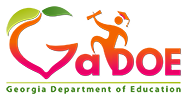College Readiness
School and System Support for College and Career Readiness
Contact: Becky Chambers, 404-463-5098
Using the PSAT Summary of Answers and Skills (SOAS) Report to Increase Student Achievement
Participants will learn how to interpret the SOAS report and set goals to address weaknesses in student skills.
Audience: High school faculties; School Leadership Teams; Counselors; Graduation Coaches; District Curriculum Directors (Training approximately three hours)
Using AP Potential
A quick tutorial for high schools unfamiliar with this tool. Does not require a formal workshop. Contact Georgia McSwain at 404-657-9799 or Bonnie Marshall at 404-656-6854.
Building and Sustaining Quality AP in Georgia High Schools: An Administrator’s Guide
This workshop focuses on the benefits Advanced Placement courses offer for guaranteeing rigor in the curriculum and preparing students for college readiness and success; selecting and training the 'right' teachers for AP courses; recruiting AP students using AP Potential; interpreting AP instructional reports to improve course offerings; and budgeting for college level resources.
Audience: High School Principals, High School Assistant Principals, Curriculum Directors (Training approximately 90 minutes)
Adding Rigor to the Instructional Program
Examining student achievement data, educators will determine deficient in the instructional program and strategies to address them.
After examining the data, participants will determine the GPS/CCGPS standards aligned to each deficient skill.
Participants will select performance tasks for which they will integrate learning opportunities that address content-specific deficient as well as infuse academic rigor.
Then, using sample GPS/CCGPS performance tasks, participants will:
- identify the "current' Depth of Knowledge or Bloom's Taxonomy;
- revise the task by increasing the level of rigor or scaffolding of levels of rigor that may include a review of basic concepts associated with the task and will result in increased academic rigor being reflected in the completed task.
Audience: Teachers and administrators for grades 9-12 (Training time is approximately 90 minutes

